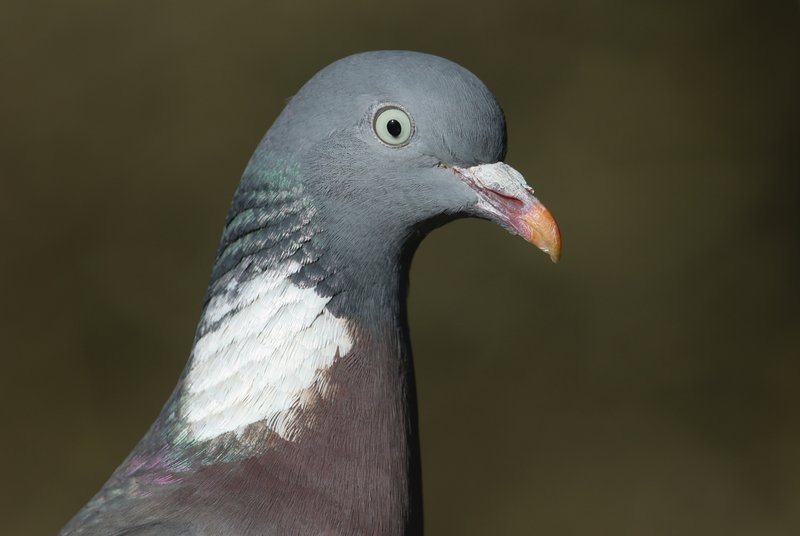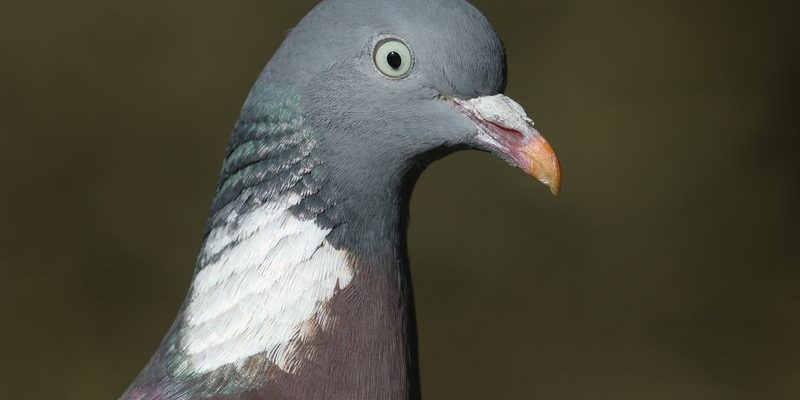
Here’s the thing: understanding the differences between pigeons and their feathered relatives can feel a bit like trying to see the difference between two shades of blue. At first, they may seem nearly identical, but with a closer look, those subtle differences start to pop out. So grab a coffee, and let’s dive into the fascinating world of these birds.
What Are Pigeons?
Pigeons, specifically the rock pigeon (Columba livia), are often viewed as the quintessential urban bird. Originating from wild birds in Europe, Asia, and North Africa, they’ve adapted remarkably to city life. They’re known for their stocky bodies, short necks, and small heads. When you see a pigeon, it usually isn’t alone; these birds tend to flock together, creating those adorable, bustling scenes in parks and plazas.
These birds have a rather interesting feature: their cooing sound, which is often mistaken for a more delicate chirp. While that soft cooing can seem sweet, it’s actually a way for them to communicate—especially among mates. Pigeons are remarkable in that they can return home from long distances, making them famous for their homing abilities. This skill was once harnessed in messages, acting as the earliest form of a postal service.
But what about those birds that look similar? Let’s break down some of their close relatives.
Doves: The Close Cousins
Doves are often confused with pigeons, and for good reason! In fact, the terms “dove” and “pigeon” can be interchangeable when referring to certain species. However, doves are generally smaller and have a more delicate appearance compared to pigeons.
Doves typically have longer tails, and their plumage is usually softer and lighter in color—think whites, creams, and pale grays. The most recognized type of dove is the mourning dove, which features a sleek silhouette and a distinctive soft cooing sound that seems to echo in quiet, rural areas and parks.
Here’s a fun fact: while all doves are technically pigeons, not all pigeons are doves. Doves are often associated with peace and harmony, especially in literature and art, making them appear even more serene compared to their bushier, bustling pigeon relatives.
Collared Doves: A Distinctive Look
Next up, we have the collared dove (Streptopelia decaocto). These birds have made themselves quite at home in urban settings, just like pigeons. They are slightly larger than typical doves but still differ visually from pigeons. One of the most notable features of the collared dove is the black crescent-shaped “collar” on the back of their necks.
Their coloring tends to be a soft grayish-brown, and they have a longer tail than your average pigeon. Collared doves often have a more melodic cooing sound and are less raucous than their agile pigeon cousins, making them a delight to listen to in the mornings.
You might wonder why these differences matter. Understanding these nuances enhances our appreciation for the diversity of bird species. Plus, it can make birdwatching more fun!
Behavioral Differences
Pigeons are often seen as bold and social, especially in urban areas where food is readily available. They’re not shy about approaching people, which is something you may not see as often with doves. Doves tend to be more cautious and can often be heard cooing softly from the safety of branches or rooftops.
In terms of mating behavior, pigeons display courtship rituals that involve synchronized movements and cooing, which can look quite charming. Doves, on the other hand, are slightly less flamboyant but still engage in tender displays, such as bowing and preening.
Another interesting aspect is their feeding habits. While pigeons are more likely to scavenge for leftovers in busy areas, doves prefer to forage for seeds on the ground, taking a more deliberate approach to their meals.
Geographical Distribution
Pigeons have a wide-ranging distribution and are found in cities across the globe. Their adaptability is truly impressive! They thrive in both urban and rural landscapes, often forming large flocks that can be seen roosting on buildings or pecking for food.
Doves, though, prefer slightly different habitats. While they can be found in cities, they also favor open woodlands, parks, and gardens. Their tendency to choose quieter settings means you might spot them in a serene garden rather than a bustling city square.
Collared doves are relatively new arrivals in many regions, having expanded their range rapidly in the last few decades. They have taken a liking to urban areas but are often found in suburban or rural environments, which provide them with ample trees for nesting.
Dietary Differences
When it comes to food, pigeons are typically opportunistic feeders. They’ll eat just about anything from grains to scraps left behind by humans. This flexibility in diet allows them to survive in various conditions, making them common sights in cities.
Doves tend to have more specialized diets, primarily feeding on seeds, grains, and fruits. Their feeding habits reflect their quieter nature; they often forage on the ground for what they can find, taking their time to enjoy their meals.
They also prefer cleaner eating habits, opting for whole seeds instead of scavenging. This preference not only impacts their health but also affects their social behavior, as they can often be seen feeding alone or in smaller groups.
Learning to Spot the Differences
Next time you’re outdoors, take a moment to observe these birds. It can be a fun challenge to identify whether you’re looking at a pigeon, dove, or collared dove based on their size, color, and behavior. Remember:
- Pigeons: Stocky, bold, and often found in large groups.
- Doves: Slender, softer, and usually more cautious.
- Collared Doves: Medium-sized with a distinctive black “collar” and a melodious coo.
The joy of birdwatching lies in the details—the more you spot, the more you appreciate the beauty of the avian world around you.
In conclusion, taking the time to learn the differences between pigeons and their similar bird species can deepen your understanding and appreciation of nature. Whether it’s their unique characteristics, behaviors, or habitats, each bird adds a rich layer to our ecosystem. So next time you see one of these feathered friends, remember their fascinating backstory, and maybe even snap a photo or two for your birdwatching album!

